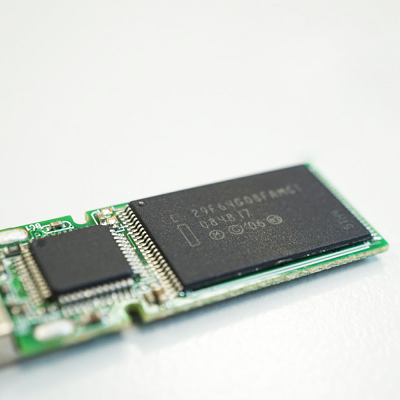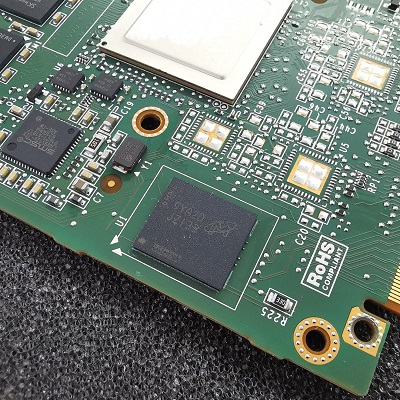eMMC
The term eMMC is short for “embedded Multi-Media Card” and refers to a package consisting of both flash memory and a flash memory controller integrated on the same silicon die. The eMMC solution consists of at least three components – the MMC (multimedia card) interface, the flash memory, and the flash memory controller – and is offered in an industry-standard BGA (Ball Grid Array, right) package. Smaller than a typical postage stamp, the tiny footprint of eMMC makes it ideal for many electronic devices, including smartphones, small laptops, smart TVs, wearable technology and smart home appliances. The “embedded” part of the name comes from the fact that the storage is usually soldered directly onto the device’s motherboard, so it is not removable nor displaced easily. eMMC storage consists of NAND flash — the same tech you’ll find in USB drives, SD cards, and solid-state drives but just packaged differently.
Beyond its use in consumer products, eMMC is rapidly being adopted in many other embedded applications, such as Single Board Computers (SBC), robotics, medical devices, automotive, networking and building control devices because of its compact size, low-power consumption and numerous enhanced features. With the rapid growth of the IoT market, eMMC is finding its way to newer applications.
The eMMC is attached through a parallel connection directly to the main circuit board of whatever device for which it stores data. By using an integrated controller in the eMMC, the device CPU no longer has to handle placing data into storage since the controller in the eMMC takes over that function, so this frees up the CPU for more important tasks. By using flash memory, the entire IC-based storage draws little power making it suitable for portable devices.






































